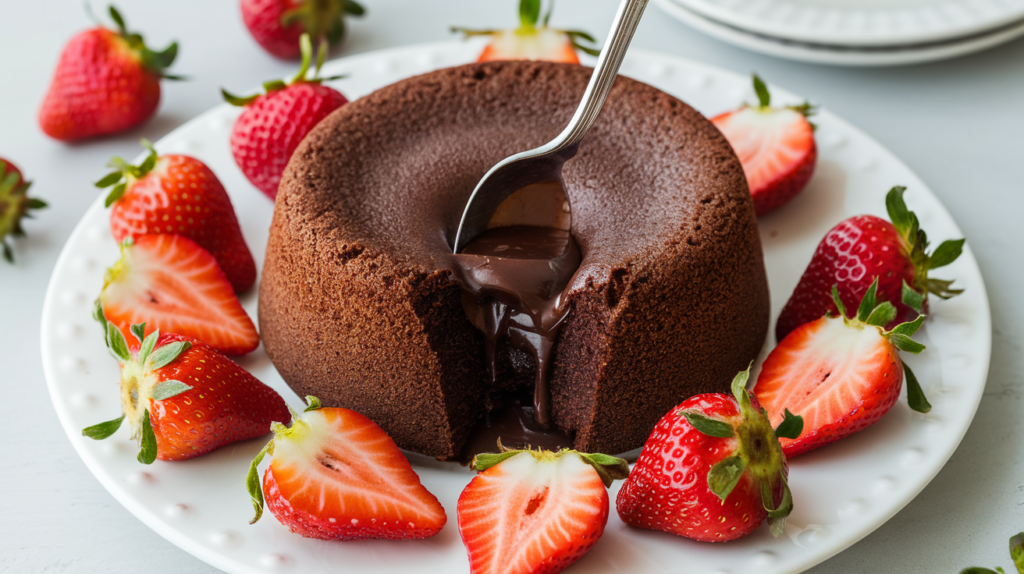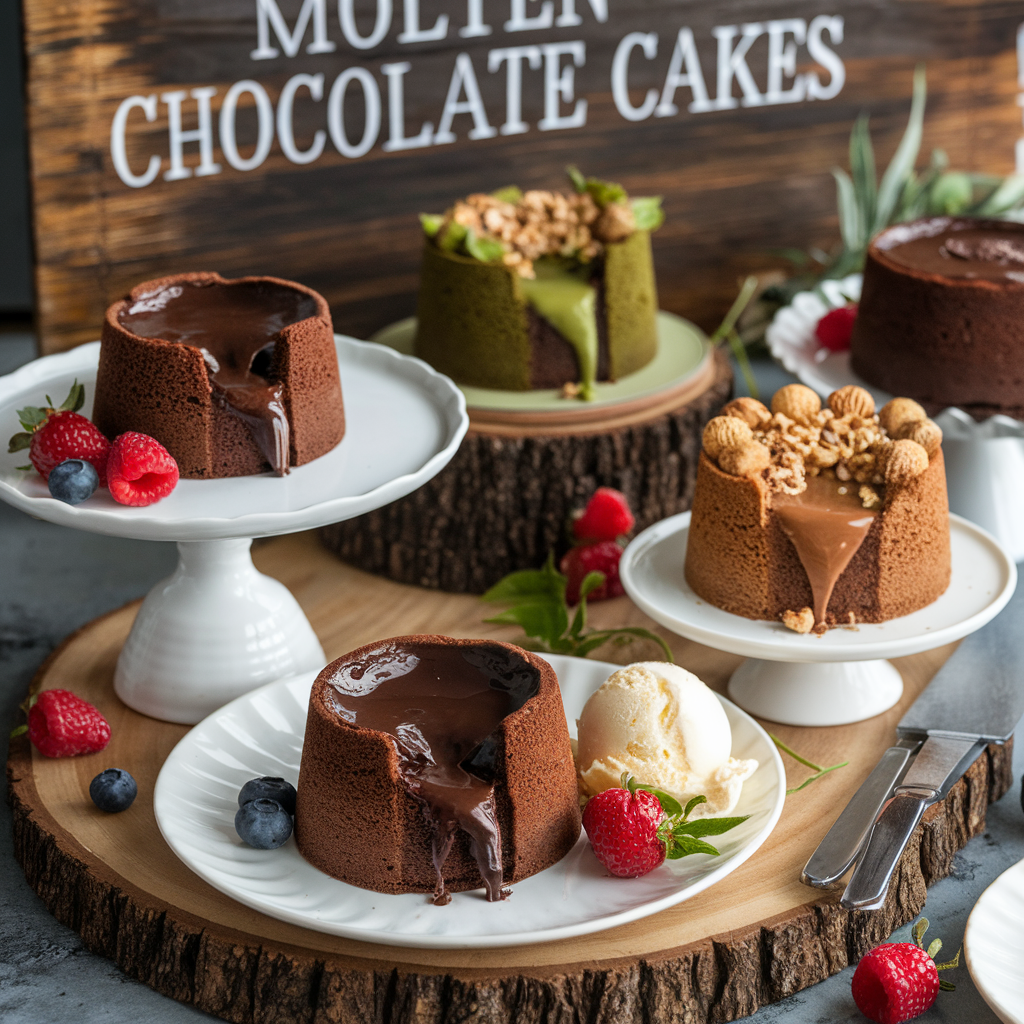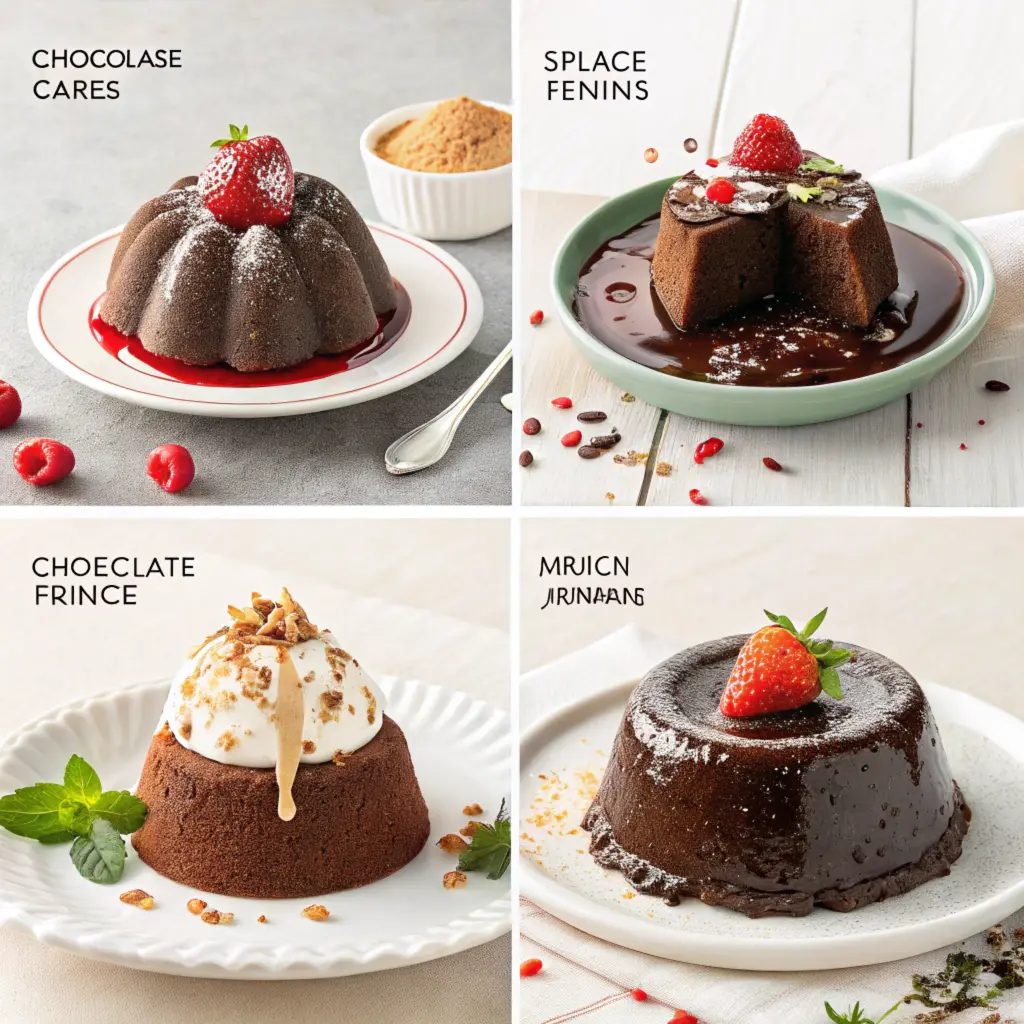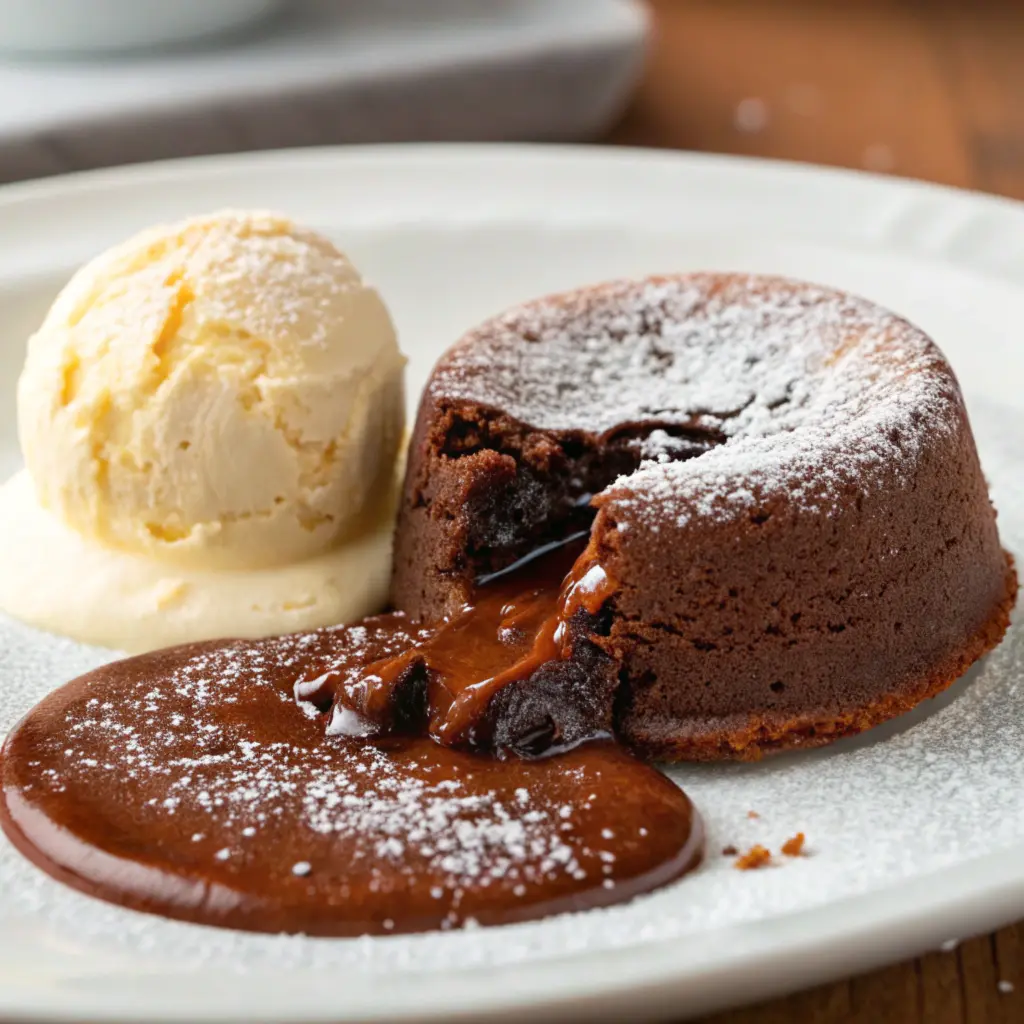Chocolate has long been celebrated as a symbol of indulgence and joy. From ancient civilizations to modern fine dining, its rich, velvety taste has transformed into countless culinary creations. Among these is the molten chocolate cake, a dessert cherished for its gooey, lava-like center. But where did molten chocolate come from? This article delves into the origins, history, and fascinating evolution of this iconic treat, while exploring its cultural impact and culinary science. Let’s unravel the sweet story behind this indulgence.
The Origins of Molten Chocolate Cake
Early Chocolate Desserts and Their Global Influence
Chocolate’s journey began thousands of years ago with the ancient Mesoamericans, who considered it a divine gift. They didn’t have molten chocolate cake far from it but they did create cacao-based drinks and dishes that laid the groundwork for future desserts. The Mayans and Aztecs often used cacao as currency and consumed it as a bitter, spiced beverage.
Fast forward to Europe in the 16th century, when explorers brought cacao across the Atlantic. This was when chocolate transitioned from a ceremonial item to a culinary ingredient. Over time, chefs experimented with chocolate in puddings, pastries, and cakes, fueling its popularity. By the 18th century, the groundwork for rich, chocolatey desserts was firmly in place.
Emergence of Molten Chocolate as a Culinary Trend
The idea of gooey-centered cakes didn’t arise until much later, though. Molten chocolate desserts are believed to have emerged in the late 20th century, blending European sophistication with American creativity. Chefs started experimenting with underbaking cakes to create that oozing effect, leading to an entirely new culinary sensation.
In France, the fondant au chocolat literally “melting chocolate” was crafted to emphasize texture. Meanwhile, in the U.S., similar creations gained traction as a unique, indulgent dessert. This cross-cultural experimentation set the stage for molten chocolate cake to become a restaurant staple.

Popularization of Molten Chocolate
Global Sensation
By the early 2000s, molten chocolate cake became a global phenomenon, appearing on dessert menus from five-star restaurants to casual cafes. Its appeal lies in its simplicity: a few high-quality ingredients combined with precise baking techniques create a decadent dessert that feels luxurious.
Cultural Variations
Countries added their own spin on molten chocolate, incorporating local ingredients and techniques. In Italy, for instance, chefs enhanced the dessert with hazelnut spreads like Nutella. In Japan, green tea-flavored lava cakes became popular, combining East and West culinary traditions.

The Pioneers Behind the Creation
The Debate: American vs. French Invention
The origins of molten chocolate cake spark lively debate among food historians and chefs. Some credit France as the birthplace, where the dessert is known as fondant au chocolat. French chefs, renowned for their emphasis on texture and presentation, developed this dish to showcase chocolate’s luxurious qualities.
On the other side, Americans argue the dessert’s origin lies closer to home. The narrative often points to an accidental underbaking of a chocolate cake, resulting in the discovery of a gooey center. This unexpected twist delighted palates and quickly turned into an intentional culinary creation.
Despite the debate, it’s evident that both countries played significant roles in shaping where molten chocolate came from. Each culture brought unique techniques and preferences, merging to craft the rich, velvety dessert we know today.
Chef Jean-Georges Vongerichten’s Claim to Fame
One name consistently emerges in the story of molten chocolate cake: Jean-Georges Vongerichten. The acclaimed French chef claims to have accidentally created the dish in 1987 while preparing chocolate sponge cake. The undercooked center, rather than being a failure, became a signature feature of what would later dominate dessert menus worldwide.
Vongerichten’s recipe balanced bold flavors with simplicity. It featured minimal ingredients chocolate, butter, sugar, eggs, and a hint of flour allowing the molten center to take center stage. The chef’s influence brought international recognition to the dessert, cementing his name in its history.
The Science Behind Molten Chocolate
Why Chocolate Melts: The Chemistry Explained
The gooey magic of molten chocolate cake lies in its chemistry. Chocolate contains a blend of cocoa solids, fat, and sugar, which melt at just below body temperature. This makes it perfect for achieving a luscious, molten texture when baked correctly.
When heated, the fats and sugars in chocolate soften before the cocoa solids fully set. In molten chocolate cake, the high-fat content creates a partially baked center that oozes while the outer cake holds its shape.
Balancing Ingredients for a Gooey Center
The key to a successful molten chocolate cake is precision. Chefs often use high-quality dark chocolate with a high cocoa butter ratio for richness. Eggs provide structure, while butter ensures moisture and a silky texture.
Timing is everything! Overbaking will solidify the center, losing the signature molten effect. Conversely, underbaking might result in an overly runny interior. Perfecting the balance of time and temperature ensures that irresistible molten core every time.

Global Variations of Molten Chocolate Desserts
Lava Cake, Fondant au Chocolat, and Other Names
The molten chocolate cake is beloved worldwide, but it goes by different names and takes on diverse forms depending on the region. In France, the dessert is famously called fondant au chocolat, translating to “melting chocolate.” French chefs emphasize minimalism, using fine dark chocolate and just a hint of flour to achieve its smooth texture.
In the United States, the term lava cake is more popular, capturing the visual appeal of the oozing chocolate center. American versions often include sweet additions like caramel or peanut butter, giving the dessert a creative twist.
Italy and Spain also have their versions, with Italian chefs infusing espresso into their molten cakes and Spaniards incorporating chili for a hint of spice. Wherever you go, this dessert adapts to local flavors while staying true to its gooey core.
Unique Twists Across Cultures
Chefs around the world have transformed molten chocolate cake into a canvas for creativity. In Japan, green tea (matcha) versions provide a bittersweet contrast to the rich chocolate base. India, known for its vibrant spices, sometimes adds a hint of cardamom or saffron to the mix.
Meanwhile, tropical regions like Hawaii experiment with passion fruit coulis drizzled on top for a refreshing twist. Despite these innovations, the heart of the dessert a molten chocolate center remains universal.
For more exciting dessert ideas, check out our collection of recipes.
How Molten Chocolate Cake Became a Restaurant Staple
The Role of Fine Dining in Popularizing the Dish
The journey of molten chocolate cake from its origin to restaurant menus around the world showcases the power of fine dining. During the late 20th century, luxury restaurants began showcasing the dessert as a highlight of their menus. The simplicity of its ingredients belied its sophisticated appeal, captivating diners everywhere.
Chefs like Jean-Georges Vongerichten elevated the dessert by emphasizing presentation. The dramatic reveal of the oozing chocolate core added theatrical flair, turning a simple dessert into an experience. As fine dining gained popularity, so did molten chocolate cake, making it synonymous with indulgence.
Its Shift to Mainstream Menus Worldwide
The success of the dessert in upscale settings quickly trickled down to casual dining and home kitchens. Chains like Chili’s and Domino’s introduced their own versions, making the dish accessible to more people. Pre-packaged lava cakes also hit supermarket shelves, allowing dessert lovers to enjoy this treat without setting foot in a restaurant.
Interestingly, the internet also played a key role in its rise. Food bloggers and recipe developers began sharing easy methods for recreating molten chocolate cake at home. Today, the dessert remains a favorite for special occasions or anytime indulgence.
For a beginner-friendly chocolate dessert, don’t miss this guide to mastering molten cakes.

The Health and Indulgence Debate
Nutritional Facts and Concerns
It’s no surprise that molten chocolate cake is a calorie-dense dessert. With ingredients like butter, sugar, and chocolate, the dessert can pack in over 300 calories per serving, depending on the recipe. While its rich texture and gooey center are irresistible, moderation is crucial for those watching their calorie or sugar intake.
Chocolate itself has health benefits, thanks to antioxidants in cocoa. However, these benefits often get overshadowed by the high levels of fat and sugar in desserts like this one. For those wondering where did molten chocolate come from?a, it’s fascinating to see how a dessert born from simple ingredients has become a complex mix of indulgence and health considerations.
Finding Balance: Treat or Overindulgence?
Enjoying a molten chocolate cake as an occasional treat is perfectly fine for most people. Pairing it with fresh fruits like berries can add a refreshing balance while boosting nutritional value. Portion control is another key. Many restaurants now offer mini versions of the dessert, letting diners enjoy the experience without going overboard.
Health-conscious bakers also experiment with alternatives like dark chocolate with a higher cocoa percentage, whole-grain flours, and natural sweeteners. These tweaks help retain the essence of the dish while making it slightly more nutritious.
FAQs About Molten Chocolate Cake
Where Did the Lava Cake Come From?
The lava cake, also known as molten chocolate cake, is believed to have originated in the late 20th century. While its exact roots are debated, Chef Jean-Georges Vongerichten claims credit for its creation in 1987. Its blend of a gooey interior and fluffy exterior has captured the hearts of dessert lovers worldwide.
Is Molten Chocolate Café American?
Molten Chocolate Café is not tied to any single nationality, though molten chocolate cake itself has deep connections to both American and French culinary traditions. The café’s name reflects the global popularity of the dish rather than its origin.
How Unhealthy Is Choco Lava Cake?
While undeniably indulgent, molten chocolate cake can be calorie-heavy due to its sugar, butter, and chocolate content. Enjoying it occasionally and in small portions ensures that you can satisfy your sweet tooth without major health concerns.
Is It Melted Chocolate or Molten Chocolate?
The key to the dessert’s success is its molten center, created by underbaking the batter just enough for the middle to stay gooey. This molten core is not entirely melted chocolate but rather a carefully balanced mix of partially baked ingredients.
Parts 6 and 7 round off the discussion by addressing health concerns and answering common questions about molten chocolate cake. Whether you’re curious about where did molten chocolate come from?a or seeking tips for enjoying it guilt-free, this iconic dessert continues to be a favorite across cultures and kitchens.
The Cultural Impact of Molten Chocolate Cake
A Dessert That Defines Luxury
Molten chocolate cake has become synonymous with indulgence and sophistication. Its delicate preparation and dramatic presentation elevate it beyond the realm of ordinary desserts. Whether it’s served at a Michelin-starred restaurant or recreated at home for a special occasion, this dessert carries an aura of luxury that resonates across cultures.
For food enthusiasts curious about where did molten chocolate come from?a, the answer lies in its blend of culinary artistry and universal appeal. The dessert’s rich, gooey center continues to symbolize comfort and decadence, making it a favorite choice for celebrations and romantic dinners alike.
Its Role in Pop Culture and Media
Over the years, molten chocolate cake has also made its way into pop culture, becoming a staple on cooking shows and in food blogs. Its visual appeal especially the moment the gooey center spills out makes it a showstopper for television audiences and social media feeds.
Restaurants and bakeries worldwide often showcase their unique twists on this iconic dessert, further cementing its status as a cultural icon. From heart-shaped molten cakes for Valentine’s Day to holiday-themed versions, this dish evolves with the seasons, keeping its charm alive.
Final Thoughts on Molten Chocolate Cake
Why Molten Chocolate Cake Endures
The enduring popularity of molten chocolate cake lies in its perfect balance of simplicity and elegance. It’s a dish that requires just a handful of ingredients yet demands precision to master. For those exploring where did molten chocolate come from?a, the journey is as rich as the dessert itself, rooted in both French refinement and American creativity.
Moreover, its versatility ensures that it can adapt to modern tastes. Whether you enjoy the classic recipe or experiment with new flavors like salted caramel or matcha, molten chocolate cake offers endless possibilities.
A Timeless Dessert for Everyone
In a world where food trends come and go, molten chocolate cake remains a timeless favorite. Its combination of flavor, texture, and visual appeal continues to captivate dessert lovers everywhere. For anyone looking to understand the allure of this dish, its history and global variations tell a compelling story of innovation and passion.
Related Desserts You’ll Love
- The Ultimate Guide to Strawberry Cheesecake: Recipes, Tips, and Variations
If you love molten chocolate cake, you’ll enjoy exploring the world of cheesecakes, particularly strawberry cheesecake for a fruity twist. - The Ultimate Guide to Making the Perfect Ice Cream Cake Recipe
Pair your molten chocolate cake with an ice cream cake for a contrast of warm and cold textures. - The Difference Between French Toast Bread and Texas Toast Bread
Chocolate lovers also enjoy breakfast treats discover the best bread for your French toast experiments. - Everything You Need to Know About Pai Bao Type of Flour
Baking the perfect molten chocolate cake requires the right ingredientslearn more about flour variations for better results.
